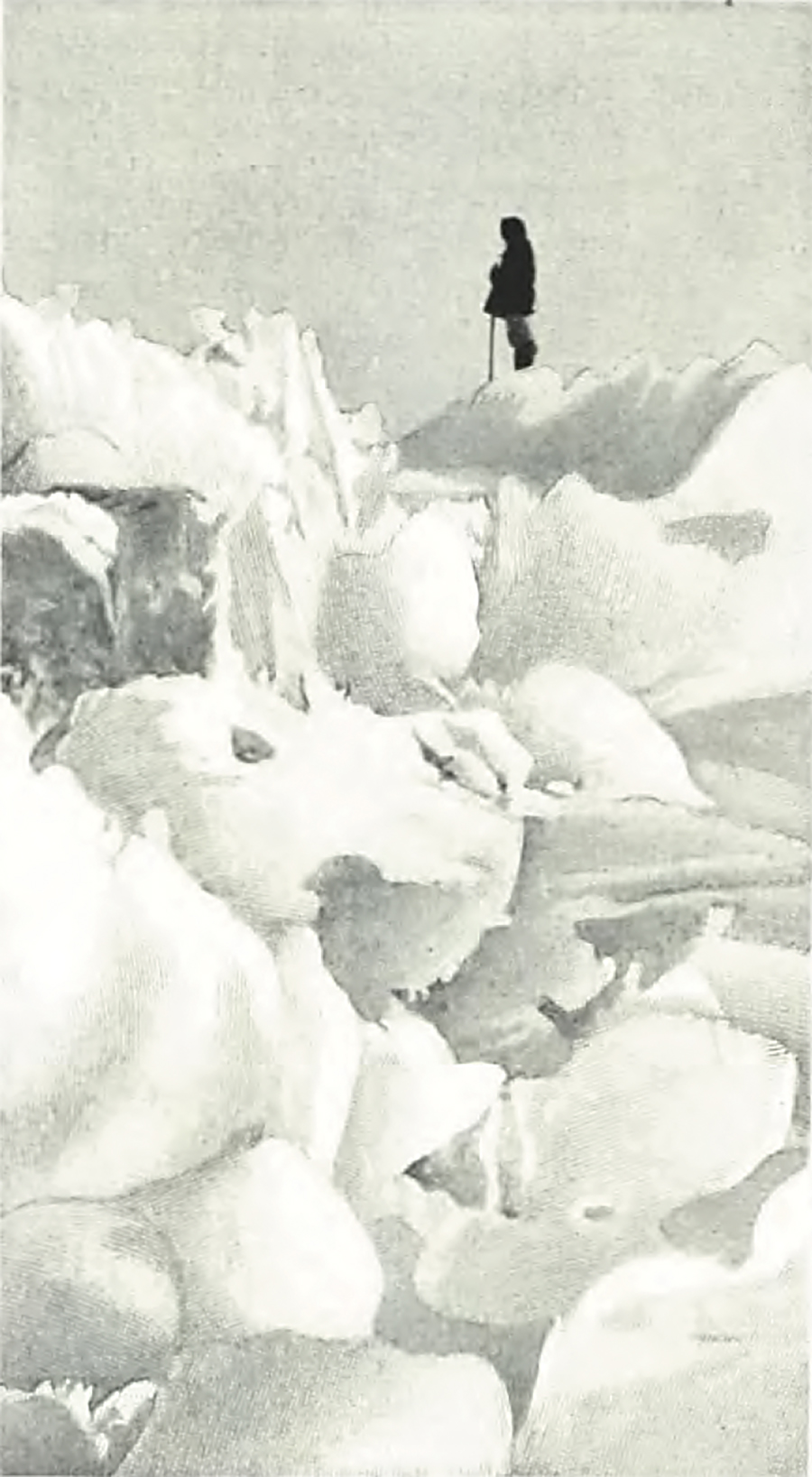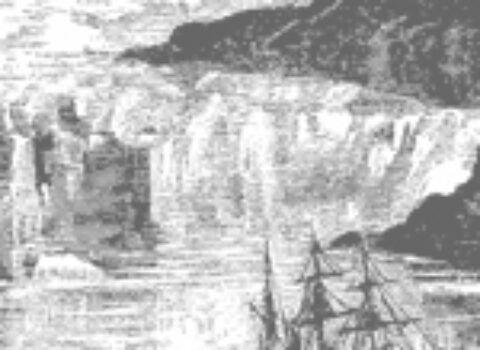This is the story of two scientists. Their search began five years ago with a single radiocarbon clue from the ocean floor. It led over many continents and seas, to drowned rivers and abandoned mountain caves. These two serious, careful scientists—Maurice Ewing and William Donn—believe they have finally found the explanation for the giant glaciers that once covered America with a wall of ice up to two miles thick, moving mountains and trampling forests. If they are right, the world is now heading into another Ice Age.

The first clues came to light on the deck of their three-masted research schooner. In the summer of 1953, the ship traced a puzzling pattern on the ocean floor. The crew were working with their newly perfected deep sea piston corer, a device which can dredge up undisturbed primeval sediment through as much as four thousand fathoms of water. In some cores of mud, they kept seeing a strange sharp line. “About a foot below the floor of the ocean the sediment suddenly changed from salmon pink to gray,” Ewing said. “We found out what that razor-sharp line meant: at a certain time the ocean suddenly changed from cold to warm.” But what could change the climate of the whole ocean so abruptly?
Neither Ewing nor Donn can say precisely when the hunch came. The chain of thought seems obvious now: water freezing—ice going out—a sharp, abrupt change. But oceans don’t normally freeze. Ocean currents dissipate the cold—except, of course, in the small Arctic Ocean. “What would happen if the ice went out of the Arctic Ocean?” Ewing and Donn remember wondering. “If the Arctic Ocean were open water, warmed by the Atlantic, warmer than the land around it, water would evaporate and fall as snow on the land. More snow on Greenland and northern Canada would make glaciers grow. . . . And suddenly we had the startling hunch that the Arctic Ocean was open during the Ice Age. And that it froze over only 11,000 years ago. It was this freezing over of the Arctic Ocean which so suddenly warmed the Atlantic—and ended the Ice Age.”
Ewing and Donn realized that their theory had startling implications for the future. We may have been watching an Ice Age approach for some time without realizing it. Scientists have observed an increasingly rapid warming of the ocean. Warm water flowing north has driven the codfish off Cape Cod to Newfoundland; the annual temperature has risen significantly in Iceland and Greenland; the Hudson River no longer freezes over as it used to.
If Ewing and Donn are right, for the first time in the history of the world, the victims of an Ice Age will see it coming. Television cameramen will be raging all over the far north, covering the breakup of the Arctic ice sheet. The Ice Age will dawn not in crashing glacial terror but in dirty slush; on a summer vacation up north, you will simply see a lot of snow that for the first time in thousands of years didn’t quite melt. In many parts of America, the worry may not be ice, but water. Scientists have speculated about the ocean flood that will occur if the melting of glacial ice caps continues. One scientist recently warned that “if all the ice were melted into the sea, its level would rise from one hundred fifty to two hundred feet. All the world’s seaports and much of its most densely populated areas would be submerged.”
After the flood subsides, the only immediate effect the Ice Age will have on us down here will be more rain. The new Arctic moisture will swell the rivers and water the deserts. But then, gradually, our weather will cool. Icy winds will blow from the advancing glaciers; the great snows will fall farther and farther south. In several thousand years a two-mile ice sheet may cover the United States and Europe. If man finds no way to switch the glacial thermostat, there may well be a real estate boom in the Sahara.
From “The Coming Ice Age,” which appeared in the September 1958 issue of Harper’s Magazine.













































































































